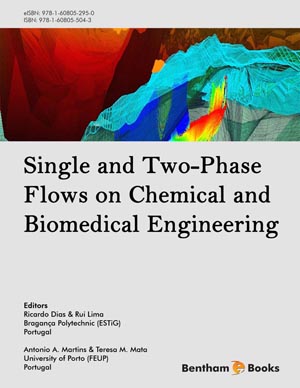Abstract
Intracranial aneurysms are local dilations of the arterial wall which have a very high morbidity rate if they rupture. Although the mechanism initiation, growth, and rupture of intracranial aneurysms are still unknown yet, it is believed to be closely related to both biosolid and biofluid mechanics. Therefore, a multi-physical model is needed to study the pathophysiology of intracranial aneurysms. In this study, we introduce a numerical model on the development of intracranial aneurysms considering the interaction between fluid and structure interaction. The blood flow is considered to be incompressible, Newtonian, and laminar. The vessel wall is considered to be elastic and isotropic. The coupling between the structural and fluid domain is performed using a two-way weak coupling method. Three general shapes are adopted in this study, namely a straight vessel, a curved vessel, and a vessel with bifurcations. They represent vessel geometries that are most typical to the cerebral vasculature. The numerical model is a "rule-base" one in a sense that different kinds of rules can be tested. In our study, we adopt the high wall shear stress hypothesis as a cause for aneurysm initiation and development. A threshold value is used for the wall shear stress. It is shown that aneurysm initiation and development can be realized using our numerical model. And the influence of WSS threshold, the Reynolds number and some other parameters are also discussed.
Keywords: Intracranial aneurysms, arterial wall, biosolid and biofluid mechanics, numerical model, fluid and structure interaction, straight vessel, curved vessel, vessel with bifurcations, cerebral vasculature, wall shear stress, aneurysm initiation and development, blood flow.


